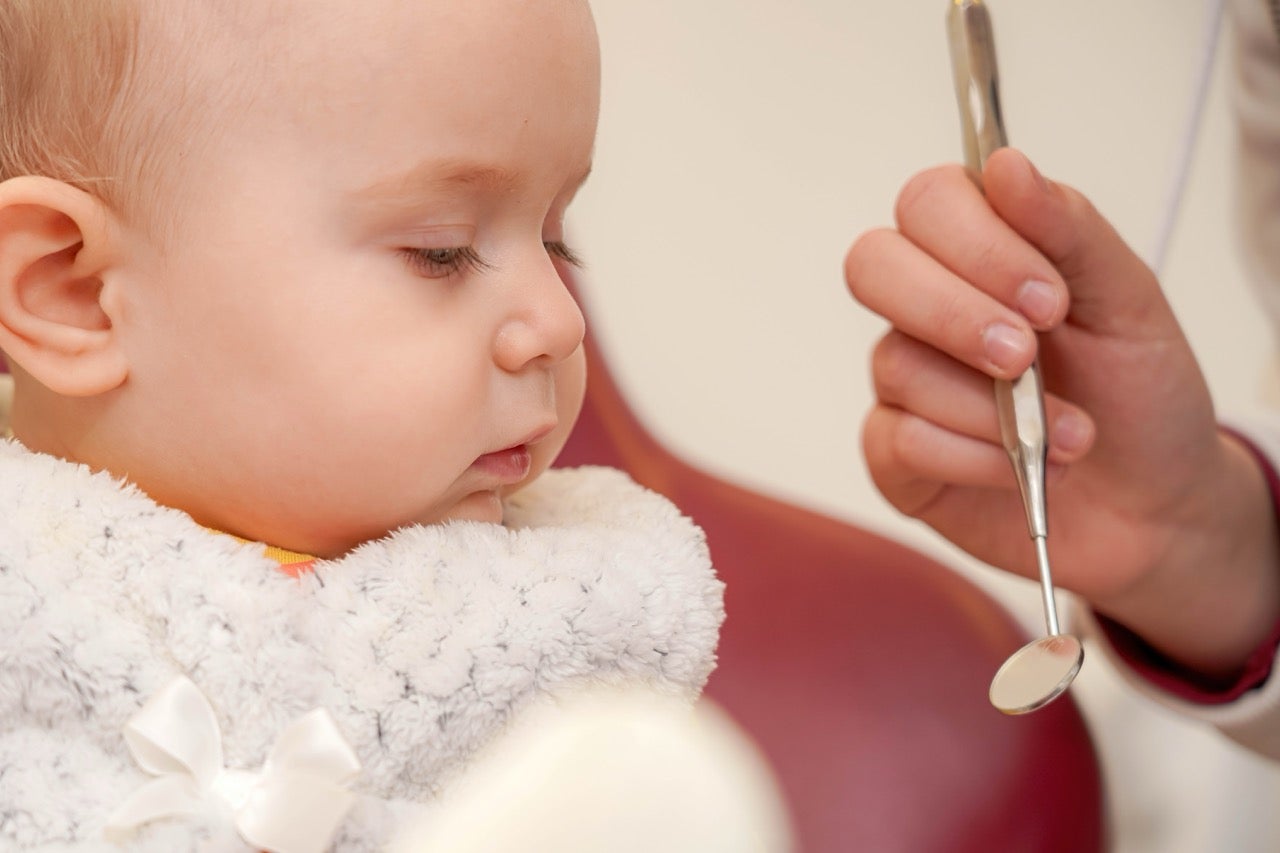Information Library
Start Reading
Babies are never too young to introduce infant oral care. Starting early helps build healthy habits and prevent future issues. But what will your child’s visit to the dentist be like? Dr. Elizabeth Powell, Assistant Professor of Community Oral Health and Pediatric Dentistry at the University of Pennsylvania School of Dental Medicine, explains what you can expect in this informative video and article.
A pediatric dentist can provide your child’s dental care throughout their childhood. A pediatric dentist specializes in the treatment of children from infancy up to their teen years. They’ve completed four years of dental school and then continue with a two-year residency concentrating on dentistry for children, including those with special needs.
We spoke with Dr. Powell about the services a pediatric dentist provides that can set your child up for a lifetime of good oral health, including preventive pediatric dental care, early detection of issues, and minimally invasive treatments.
 The first dental visit is an excellent opportunity to learn age-appropriate information about your infant’s oral health so you know what to expect at each stage of development. It’s also a great time to discuss milestones and prevention strategies for maintaining excellent oral health throughout life and avoiding early childhood caries. And that’s important when you consider the CDC has found that more than 1 in 10 children aged 2 to 5 years had at least one untreated cavity in their baby teeth.
The first dental visit is an excellent opportunity to learn age-appropriate information about your infant’s oral health so you know what to expect at each stage of development. It’s also a great time to discuss milestones and prevention strategies for maintaining excellent oral health throughout life and avoiding early childhood caries. And that’s important when you consider the CDC has found that more than 1 in 10 children aged 2 to 5 years had at least one untreated cavity in their baby teeth.
When should I take my child to the dentist? Dr. Powell recommends bringing your child for a visit either by the time of the child’s first birthday or around 6-7 months. “That’s the time that we expect to see the first tooth erupt,” she explains.
During the visit, the dentist will complete a thorough medical history and review any medications and/or allergies. “When we examine the teeth, if they are present, we will look for staining, demineralization, or breakdown of tooth structure,” Dr. Powell says. She would also use this time to discuss a dental caries assessment (caries is the disease process that leads to cavities) and good dietary and oral hygiene practices.
Other areas covered include:
How often should a child go to the dentist? “After the first visit, we encourage parents to continue dental checkups for children at six-month intervals to monitor the development of the primary dentition and prevent early dental issues.”
Dr. Powell uses positive reinforcement. She creates a welcoming and friendly environment for both the child and parents, and focuses on building trust by engaging in open communication and addressing all concerns.
She also keeps early visits brief, using the time to familiarize the child with the office and explain to the parents the preventative steps they can take to protect their child’s oral health. Many parents don’t know that severe early childhood dental caries can be extremely debilitating for children, causing chronic pain and infection, affecting quality of life, and even resulting in missed days from school.
“I have found that when we give parents the tools to prevent tooth decay, they are incredibly motivated to help their children establish good dietary and oral hygiene habits to avoid the negative effects of dental caries.”
 Dr. Powell shares that the American Academy of Pediatric Dentistry provides a formula to assess dental caries risk. The assessment considers social, behavioral, clinical, and/or protective factors.
Dr. Powell shares that the American Academy of Pediatric Dentistry provides a formula to assess dental caries risk. The assessment considers social, behavioral, clinical, and/or protective factors.
Children with a higher caries risk:
Children with low caries risk:
“Once we know a child’s risk for caries development, we can prescribe the appropriate minimally invasive treatment,” explains Dr. Powell. Children who have lower caries risk will not need significant intervention. Depending on the child’s age, protective sealants and/or fluoride application could be used. However, a child with a higher caries risk and active decay may require minimally invasive techniques to arrest or eliminate decay.
“Minimally invasive dentistry is a philosophy of dental care concerned with the early identification of disease, factors contributing to the disease, intervention to arrest the disease, and, if needed, restorative treatment,” Dr. Powell says. “We use a caries management pathway to decide the appropriate preventative and restorative intervention based on the caries risk category.”
Minimally invasive techniques include:
Dental caries management should include identifying an individual’s risk for caries progression. “We have to understand the disease process for that child and use active surveillance to assess disease progression; we have to be able to determine if things are improving or worsening,” Dr. Powell says. “If we do this, then we can apply the appropriate interventions and preventive services, supplemented by restorative therapy when indicated.”
The severity of the situation often determines what can and can’t be done. Young children with extensive caries may need oral sedation or general anesthesia during restorative treatments (such as extractions, fillings, pulp therapy, crowns, and space maintenance), while those with less severe caries can use techniques (such as SDF) that don’t require sedation or anesthesia and are less overwhelming.
It is important to thoroughly discuss all treatment options with parents so that they can make an informed decision about their child’s oral health care needs and treatment.
 If you have an infant, consider making Penn Dental Medicine their dental home. Our experienced pediatric dentists and dental students (working with faculty such as Dr. Powell) provide a comfortable environment and fantastic care that puts children and parents at ease while helping our smallest patients build an oral health foundation that can last the rest of their lives.
If you have an infant, consider making Penn Dental Medicine their dental home. Our experienced pediatric dentists and dental students (working with faculty such as Dr. Powell) provide a comfortable environment and fantastic care that puts children and parents at ease while helping our smallest patients build an oral health foundation that can last the rest of their lives.
Take a moment to watch the video for Dr. Powell’s complete interview. Then, to make an appointment, just complete this form or call us at 215-898-8965. You can also download a short brochure that explains more about pediatric dentistry at Penn Dental Medicine.